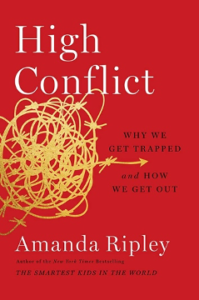If you have been in the church for any amount of time, then you have experienced some church conflict. Sometimes the conflict is minor- Who makes the best pound cake? Other times, the disagreement can cause a rift large enough to split the entire church.
Real division over theological topics is nothing new. It is the reason that plenty of the New Testament letters were written. It is the reason we have different denominations today. Division and disagreement happens in the church. Inevitably, all people in theological church conflict point to the Bible to substantiate their perspective.
It is no secret that the United Methodist Church (my own denomination) is splitting due to theological disagreements over human sexuality. (Granted- there’s a lot to this situation, but there are plenty of other blogs to understand those details.) As a United Methodist pastor, I started wondering, “Is there a way to talk about this issue in a way that truly gets to the heart of the problem?”
Thus, the class Ears to Hear was born.
The Purpose
To the congregants, there were three stated goals:
- To have them understand how they read the Bible
- To hear how others read the Bible
- To create a safe space for the conversation to take place
If you are a pastor or a small group leader, maybe you have been in this type of scenario:
You are teaching about a topic like creation. You have studied the topic (and the Bible and interpretation) for a long time. Then, when you are in class, it becomes clear that congregants have vastly different beliefs about what to do with two different creation accounts and how to account for modern science in their biblical interpretation.
The reality in this type of situation is that people believe differently about this topic because of their interpretation of scripture. However, this interpretive method is hidden beneath the surface in an implicit understanding for most congregants.
Congregants differ in their understanding of topics like creation or human sexuality because they have different ways of interpreting the Bible.
What Did We Do
Ears to Hear is a class that was designed to address this problem. It was a six-week class with the first half focused on teaching congregants to work on self-reflection and understanding what they believe about the Bible. The second half of the classes focused on different topics and congregants were asked to explain their beliefs through the lens of what we talked about in the first three weeks. Each week was a harder conversation.
The six sessions were:
- What is the Bible? And why is it so hard to interpret?
- Your theology of scripture. What do you believe the Bible is?
- Paths of interpretation. How do different people interpret scripture?
- What do you think the Bible says about… Science and creation?
- What do you think the Bible says about… Women in leadership?
- What do you think the Bible says about… Human sexuality?
This process ultimately shows that our methods for interpreting are complex. People are not black and white. Issues are not simple. When it comes to biblical interpretation, William Brown was right in his book that engaged a wide variety of theologians and scholars to speak on the topic.
“Most find themselves somewhere in the middle. But such a comparison is egregiously reductive, as if they could all be plotted on a horizontal axis in relation to some central point.”[1]
How Did We Do It
The final aspect of the class was actually making it safe to talk about these things. A few logistical items needed to be in place from the start: The same people must show up every week. It has to be a small group. (I would recommend 6-10.) Everyone must speak. There has to be plenty of time. – All of these elements are essential.
When the class gets to the last three weeks, the leader functions much more like a mediator in conflict. Strategies from the secular realm helped guide the conversations. The book Crucial Conversations sets up helpful ground rules.
- The stakes are high, opinions vary, emotions run strong
- There is no winning. Only adding to the pool of shared meaning.
- There is no secret intent. The whole purpose is sharing.
Additionally, High Conflict strategies were explained and used: High conflict is not healthy conflict. It is when a conflict shifts from productive to good-versus-evil or us-versus-them. To reduce high conflict we:
- Investigate the understory of the understory of the issue
- Reduce the binary
- Complicate the narrative.
Every participant in the class was asked to write down their thoughts to very specific questions. Then every person shared. Everyone had to be vulnerable, but sharing was stated as the purpose. Ultimately, it was clear that each person was complex and nuanced.

Results
In all three goals, participants expressed growth and success. They learned about themselves and they learned about others. However, in the midst of a very divided denomination, perhaps the most shocking result was with how safe these congregants who mostly didn’t know each other beforehand felt talking about controversial issues. After the study, participants were asked, “How safe did you feel the class was for sensitive topics?” On a scale of 1 (not safe at all) to 5 (completely safe), 90% marked 5 and 10% marked 4.
This study wasn’t perfect. Every student doesn’t fully understand their entire theology of scripture, and this process doesn’t make the conflict disappear. However, in a world where it is difficult to find ways to talk about real issues directly and lovingly, this class was refreshing and encouraging.
May you and your church have ears to hear the Word and each other.
[1] William P. Brown, ed., Engaging Biblical Authority: Perspectives on the Bible as Scripture, 1st ed (Louisville, Ky: Westminster John Knox Press, 2007). xi.


